
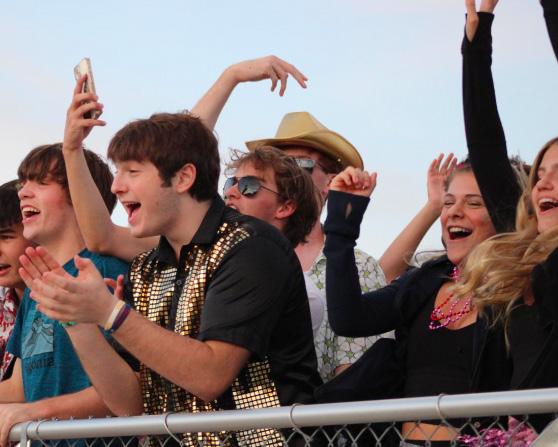

ARTS


ONLINE








STAFF WRITERS
Stella Ain
Alegria Aguilera
Jessica Assafeen
Kelsey Chellberg
Addison DeVore
Madi Garrelts
Aanya Kabra
Anjali Kambhampati
Audrey Kohnen
Abi Patterson
Alex Robertson
Madisyn Stogsdill
COPY EDITORS
Emmett Abar
Lauren Austin
Ruby Bierman
Bennett Palmer
DESIGN EDITOR

Ella Shafer
EDITORS-IN-CHIEF
Lexi Newsom
Arshiya Pant
Here we are. May, and only a couple of weeks of school are left before us. After a full year of difficult exams and lengthy projects, of homework assignments and countless late nights spent studying, we have made it to the end of the year. It may be gratifying or relieving or even bittersweet.
For seniors, these emotions are magnified. Their four full years at BVN are coming to a close, and the freedom of a life beyond the walls of BVN and their childhood homes lies on the horizon. Whether it’s university, a gap year or entering the workforce, looking ahead to the next phase of their life has forced many seniors to reflect on their past: their elementary recesses, their middle school experiences that will forever be unnamed and of course, the classes and teachers who have seen them through their K-12 education.
It would be ungenuine to paint the high school experience as completely positive. The trials and tribulations of navigating new relationships, existential crises over grades and mind-numbing stress from an endless stream of activities will not be missed by most
seniors; however, in those memories, it is important to remember the bonds we have formed, the pride we have earned through our hard work and the passions we have discovered in our academic journeys. That which we have experienced will ultimately hold the value we assign it. This is perhaps the most beautiful facet of the high school experience.
Even more than our experiences themselves, it is their impact that we should celebrate. They have made us who we are. For underclassmen, we implore you to accept and embrace both the highs and lows of life as your high school experience continues to unfold.
For seniors, we hope you see how the past four years — from friends and teachers to classes and curricula — have shaped you into the profoundly unique and talented individuals you have become.
While we can’t cover every moment of every senior’s high school experience, a few departing students volunteered the stories of their lasting connections with the BVN staff. And to our immense appreciation, our amazing senior staff members also reflected on their time within rooms 409 and 411. Whether it is through better understanding teacher-
SOCIAL MEDIA EDITORS

Anna Sandage
Ella Thomas
WEB EDITORS
Sejin Hahn
Calla Jordan
PODCAST HOSTS
Calla Jordan
Abi Patterson
student bonds and curriculum impact, or taking in senior staff members’ observations and advice, we hope the diverse reflections presented throughout this issue resonate with you. Ultimately, high school is incredibly different for all students — it can be the source of fond memories, hard lessons or more likely, a combination of both. Despite BVN’s roughly 1,500 different student experiences, there are a few common emotions, observations and memories that often unite us. We hope you can find parts of your own story in others’ as you read through this issue’s centerfold. High school is messy at times, but maybe the school and the people within it have left as much of an impact on our seniors as they have left on BVN.
Sincerely, The North Star Staff
Every single essay, every single homework assignment gets shoved through Turnitin. com. Many tests are passwordprotected, or rely on Lockdown Browser to prevent cheating. Cell phones are taken, notifications get turned off and any technology may be seen as a risk. Enter the newest threat to academic integrity: artificial intelligence.
Though the study and pursuit of artificial intelligence is not new, A.I. has recently become a hot topic of conversation when it comes to education, specifically regarding the potential threat to academic integrity. Lisa Bauman, a gifted program advisor and former English teacher, said that the topic has been seen as a threat for a while.
“I think it’s a little bit scary to think that we can be replaced. How sad for teachers or creative people to feel like they could be replaced,” Bauman said.
Since current plagiarism checkers cannot detect the work of A.I. chatbots like ChatGPT, it becomes easier for students to take advantage of a resource like this to quickly knock out typed writing questions and essays without having to
do the work. An anonymous freshman admitted to having used the program once for an assignment.
“People only really only cheat when it’s easier than studying or actually doing their work,” they said.
To minimize the risks of cheating with A.I., ChatGPT has been banned across Blue Valley school computers and while on Blue Valley WiFi. These measures might not completely eliminate the problem, but they can reduce A.I. usage in classrooms.
ChatGPT is a specific A.I. language model which has been trained to answer prompts using text data from all across the internet. Users can get answers to simple questions, but can also get whole
pieces of creative writing, articles and, more relevant to academia, complete essays that do not get caught by plagiarism checkers.
However, ChatGPT has its issues. It does not know things that are more recent than 2021, and according to the University of Chicago, “There are no indications that ChatGPT understands the questions … or what it is producing in answer.”

This can lead to blatantly false or biased information. “I think if an intelligent human being who is educated reads what an A.I. wrote, they could figure out that it’s not their student’s work,” Bauman said.
So, that proposes a new question. How
“
It’s a natural byproduct of technology in general. I don’t think you can have the good without the bad.
– Tisya Midha
With the rise of accessible A.I. chatbots, can schools and students maintain academic integrity in the classroom?
does the world of education move forward with this new technology? Is this a real threat? According to junior Tisya Midha, the internet in general has made cheating easier.
“I think everything now is online. I hardly get worksheets or paper copies anymore,” Midha said.
In response to the potential threat of this technology, there may be a transition back toward types of assignments with less reliance on technology. According to the New York Times, “Some professors are redesigning their courses entirely, making changes that include more oral exams, group work and handwritten assessments in lieu of typed ones.”

“I think teachers could use it as a tool because I think that people are going to be using it,” Bauman said. “You can’t hide it. You can’t just deny it’s there.”
These cheating problems are not 100% new. There is other technology that minimizes the amount of work that needs to be done by a student. Apps like
Photomath prevent students from needing to do their math homework. People sell essays that have never been published so that they will not sound the plagiarism alarms. According to Midha, cheating is inevitable.
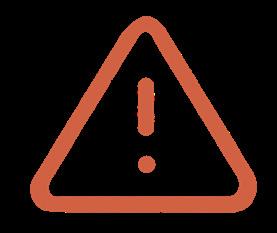
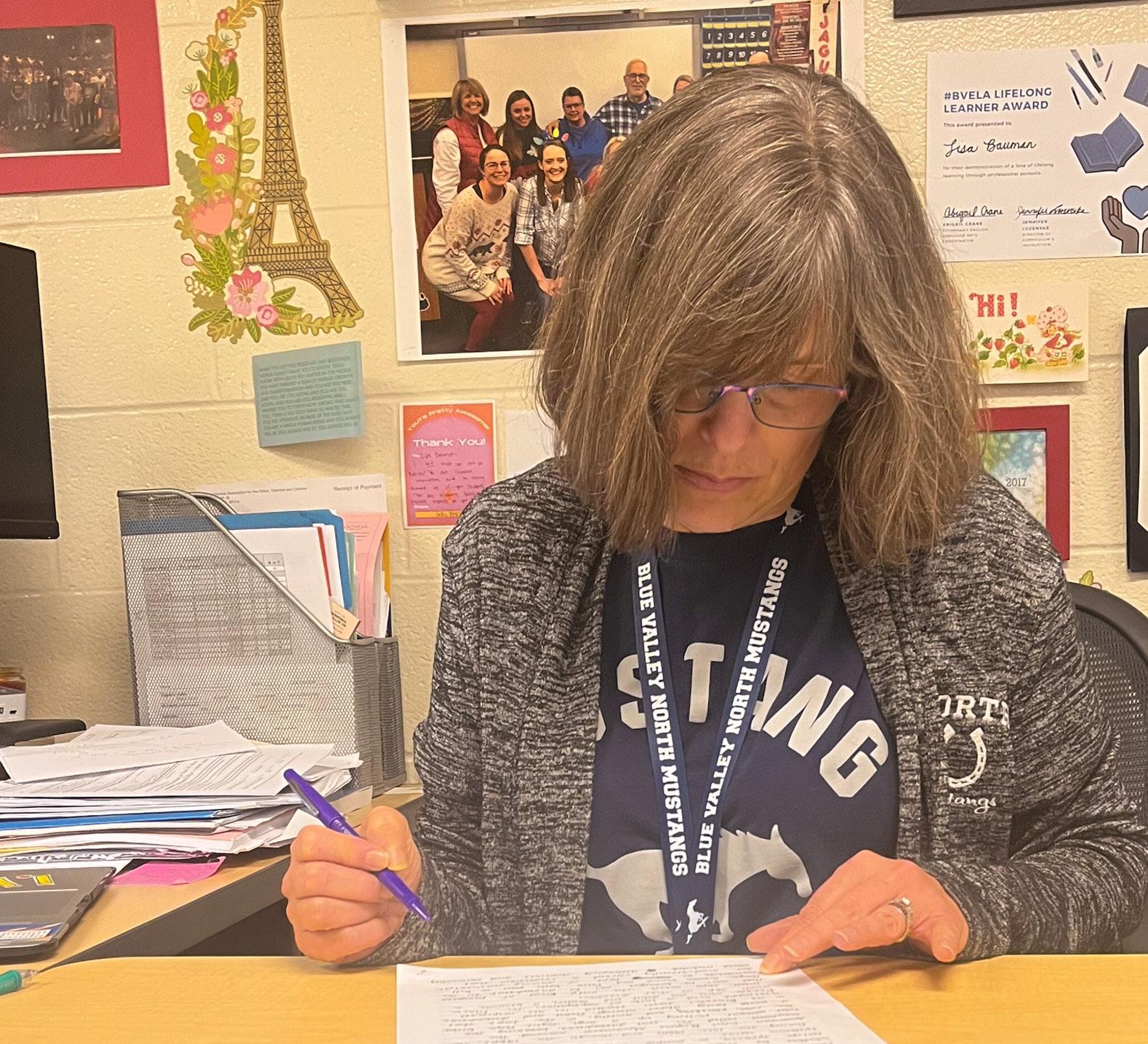
“It’s a natural byproduct of technology in general,” Midha said. “I don’t think you can have the good without the bad.”
Ultimately, according to Midha, the future of academic integrity relies on honesty, no matter the advancements in technology students have at their fingertips.
“People are clever, [and] they probably cheated back then too. It’s not like it didn’t exist,” Midha said. “But you should just appreciate the education that you’re having, rather than trying to cheat your way out of it.”

Users can request things like or
“Explain the events of WWI to me like I’m a fifth grader.”
“Write a poem about fear.”
Chat-GPT has the capability to make corrections, remember earlier statements and produce original responses.

Chat-GPT is incapable of using real soures and knowing information from after 2021, and will sometimes provide users with incorrect information. Handwritten essays can be a tool for teachers to avoid plagiarism from
29. This is the number of challenges made last year to library, school and university materials nationwide, according to the American Library Association. Harvard University also found that book banning, while less likely to make it to the federal level today, has left its mark on U.S. history.
Harriet Beecher Stowe’s “Uncle Tom’s Cabin” was the first book in the U.S. to experience a ban on a national scale. This occurred in the mid-1800s when the Confederacy banned the book from stores due to its proabolitionist agenda, which ignited heated debates about slavery.
Banning books based on political viewpoints has occurred throughout history. However, in the 1920s, shifts in politics and social moral led booksellers
and buyers to advocate for their right to read what they wanted. Then in 1933, The United States v. One Book Called Ulysses overturned a previous ban on James Joyce’s “Ulysses,” creating a new legal interpretation of the First Amendment when it came to books. This interpretation is still seen today, while books are being challenged on a more local scale.
In Blue Valley, books such as “Tom Sawyer,” “Of Mice and Men,” “To Kill a Mockingbird,” “Adventures of Huckleberry Finn” and “Lords of Discipline” are no longer taught in classrooms, and many others have been challenged. How is a book banned from classrooms, and what effect does this have on education?
“Challenging” a book is the attempt to
ban a book from a library, school district, institution, organization, government entity, retailer or publisher based on its content. Challenges can either result in the book being banned or be overturned, keeping the book in circulation.
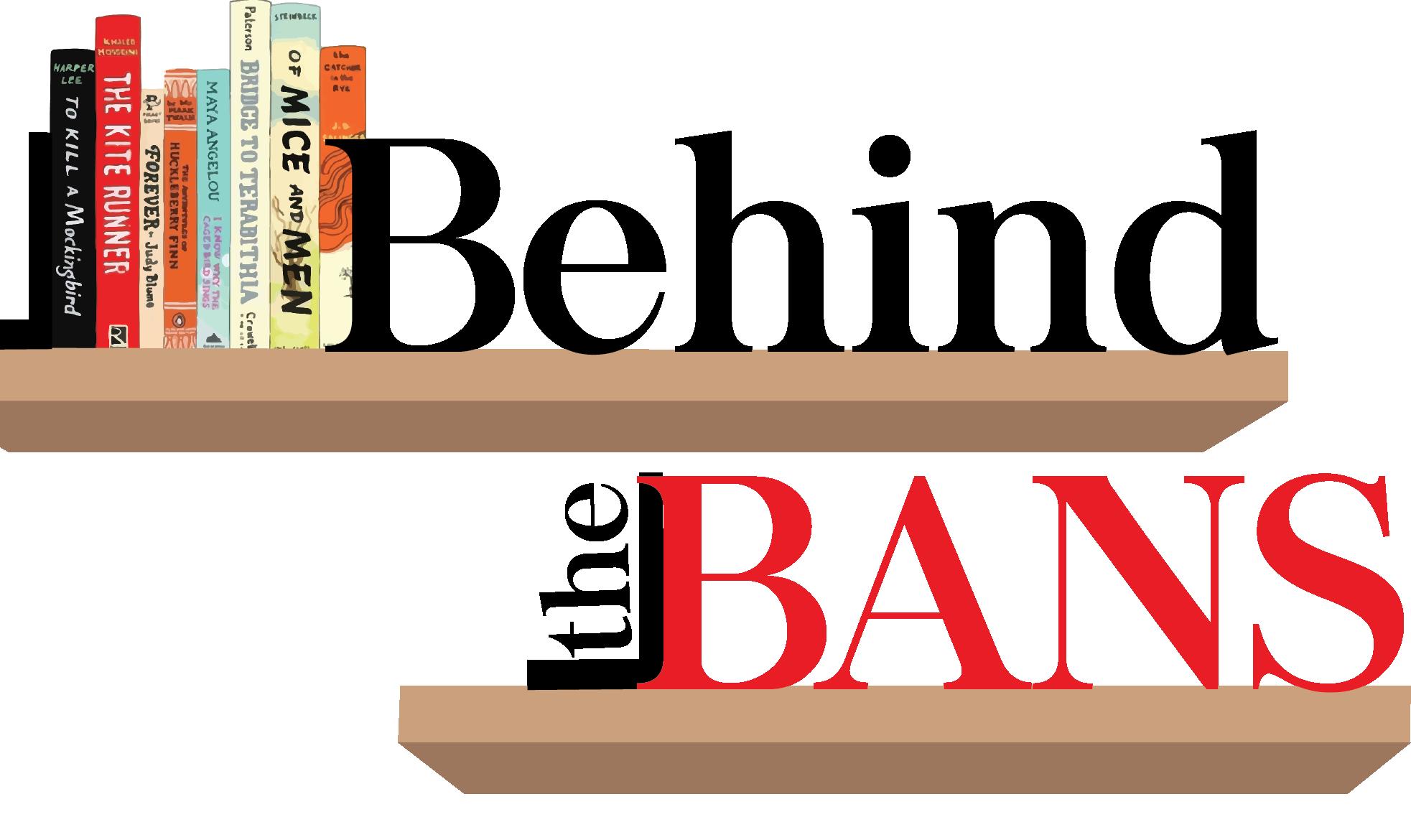
Librarian Abby Cornelius talked about the most recent challenges within the Blue Valley District, and what causes them.
“When people challenge books, it’s because they don’t want anyone to read them, not just their own children,” Cornelius said. “There were four challenges last year. One of [the books] was removed, and the other three were retained because they followed all the policies.”
Schools like those in Blue Valley might choose to not carry a book in their library, a bookseller might refuse to sell a certain book or a library might try to expunge a book from its collection. However, official ordinances and rules that ban books are difficult to enforce on any large scale in the U.S. because of the First Amendment right to free speech and free press. Instead, most challenges and bans occur on a more local level.
If a parent or student wants to challenge a book, there is a policy they must refer to and a form they have to
What goes into the process of banning books and to what extent should book banning be permittted?
“
Literature gives us the ability to step into someone’s shoes, to think as they do in really difficult situations, and to ponder what we would do ... It’s like a rehearsal for life.
–Shelly Weir “
fill out. The first step is to talk to school principles, where they explain the policy. The challenge can then continue to the district level, where a committee of students, teachers, librarians and administrators make a recommendation for the book. If they are still not satisfied, they can
151 Challenges
Reasons: LGBTQIA+ content, sexually explicit
86
Challenges
Reasons: LGBTQIA+ content, sexually explicit
73 Challenges
Reasons: Depiction of sexual abuse, EDI content, sexually explicit
classroom and why they were selected,” Cornelius said. “However, at any time, people have control of what they read and can opt out of reading a certain book in class. That’s the beauty of choice.”
English teacher Shelly Weir described the importance of books in the curriculum as well as free reading books available in the library.
“Literature gives us the ability to step into someone’s shoes, to think as they do in really difficult situations and to ponder what we would do,” Weir said. “It’s like a rehearsal for
right to decide that for somebody else,” Cornelius said. “If there’s something you don’t want your kids to read, then they don’t have to read it.”
Weir said she finds value in pushing the limits and exploring uncomfortable topics in order to stay well-informed and avoid misinformation.
“In the Blue Valley District, we have fought tooth and nail to really hone the books that we are reading on appropriate levels,” Weir said. [These books] allow a different perspective. They make you think differently about your interpretation and broaden your knowledge.”
Cornelius agreed on the value of experiencing diverse literature instead of limiting it.
“I like to teach that you have to think for yourself,” Cornelius said. “Get as much information as you can instead of constricting it, and then decide for yourself what your opinion is. Learn and become knowledgeable so that you’re no longer fearful.”
Challenges
62 Reasons: LGBTQIA+ content, sexually explicit
55 Challenges
Reasons: Depiction of sexual abuse, LGBTQIA+ content, drug use, profanity, sexually explicit
According to the American Library Association, the top five reasons books were challenged or banned from libraries in 2022 were sexual content, offensive language, unsuited to age group, religious viewpoint and LGBTQIA+ content.

“I believe that every parent — and I will fight for their right — can object to a novel I’m teaching in my room due to those reasons,” Weir said. “Yet, they do not have the ability to tell someone else’s child that they can or cannot read it.”
Cornelius elaborated on who should be allowed to limit someone’s
“A parent has the full privilege and right to say, ‘I don’t want my kid to read that,’ but they never have the
“
A parent has the full privilege and right to say, ‘I don’t want my kid to read that,’ but they never have the right to decide that for somebody else.
– Abby Cornelius
“She’s a cheer captain and I’m on the bleachers,”
Senator Mike Lee (R-UT) quoted during a Senate hearing. The line, a reference to Taylor Swift’s hit “You Belong With Me,” was one of many Swift lyrics used in the Judiciary Committee meeting surrounding Ticketmaster’s handling of ticket sales.
After announcing her “Eras Tour,” Swift alerted eager fans to register for Ticketmaster’s “Verified Fan” presale. Sign-ups for the presale were available to anyone with a Ticketmaster account, but less than half of the 3.5 million fans who registered received presale codes. “The Lucky One(s)” who did receive codes still weren’t in the clear for purchasing tickets. According to Ticketmaster, the website received over 3.5 billion total system requests. The ticket-buying site eventually crashed, preventing millions of fans from acquiring tickets to the now sold-out shows. Since Nov. 15, 2022, when tickets for Swift’s shows first went on sale, fans of other artists such as Beyoncé and Morgan

Wallen, have left empty-handed after attempting to buy concert tickets.
Several students have recently used Ticketmaster’s services to purchase tickets for an event or show. Senior Lakin Hobrock used Ticketmaster in hopes of purchasing tickets to Morgan Wallen’s “One Night at a Time World Tour.”
“I already heard all the bad things about Taylor Swift. So going into it, I was kind of scared,” Hobrock said.
Once Hobrock joined the queue and eventually got the chance to choose her seats, glitches began to occur, impeding the purchase process.
“You got a certain time to get your tickets because Morgan Wallen is in high demand … so once I got my time, I got in [to the system], and every time I clicked on the ticket that I wanted to purchase, the whole site reloaded,” Hobrock said. “I ended up just buying cheaper [tickets for] not very good seats.”
Senior Bethany Wilkie had a frustrating experience with Ticketmaster as well, and said she experienced buyer’s
remorse after purchasing tickets to Swift’s “Eras Tour.”
“[My friends and I] waited in line so long to get our tickets. Then we ended up selling them because the people we were going with bought better tickets. So we really didn’t need to wait for that long,” Wilkie said.
While Hobrock was content spending money on the additional fees that came with her tickets, she only considered it reasonable because of her love of Wallen’s music.
“[The fees] were like $60 or something for us, which I think is bizarre. I think it’s very unnecessary, but I mean, there’s always fees whenever you buy,” Hobrock said. “I’ll pay more if I listen to them or like them more, rather than just going to a concert just to go.”
Freshman Jameel Ahmed, a selfdescribed “Swiftie,” attempted to buy tickets for Swift’s July 8 show at GEHA Field Arrowhead Stadium. Ahmed had received the “Verified Fan” presale code and proceeded to join Ticketmaster’s
44 songs
the average number of songs on the show’s setlist
$712-$4,750 range of prices for a ticket to Swift’s July 7 show as shown on StubHub
July 7 and July 8
Swift’s two Kansas City dates for the tour
76,000 seats
the approximate seating capacity of GEHA Field at Arrowhead Stadium
queue when the presale started.
“So I get in the queue and instantly it says 2000 plus people [are] in front of me. I was scrolling through TikTok … and I saw a little thing you could do to view [your] spot in line. I was [number] 80,000,” Ahmed said.
After spending approximately five to six hours in the queue, Ahmed’s place in line began to decrease.
“Then instantly, my queue jumps. And then it goes so fast and I get in to buy tickets,” Ahmed said. “I’m trying to look in the floor, but every floor tickets are gone. [Then I looked] at [the] lower bowl [seats] and then I’m like, ‘Oh my God, that’s a perfect ticket.’ So I bought the
ticket. Then it said, ‘cannot get ticket.’” Ahmed then kept attempting to purchase his ticket, but his allotted checkout time ran out, forcing him to rejoin the end of the queue. Hours continued to pass, but eventually, Ahmed was able to purchase a ticket.
Wilkie’s reasoning for spending time and money on her tickets was based on fondness of the artist.
“I love Taylor … she’s one of my favorite artists. So, I feel like I was spending more [on] her but I feel like with any other artist I would not have spent that much,” Wilkie said. “It’s just [based on] how much I like them and how many songs I know.”
Although Ahmed believed his ticket fees were “excessive,” he also justified his purchase with his love for Swift.
“I think the initial pricing [for the tickets] was reasonable, like $499 for that view and for Taylor Swift. But the $100 fees were excessive and not needed,” Ahmed said. “I would [sell] my arm, I would give my kidney [or] liver up for Taylor Swift.”
Wii, PlayStations, Xboxes, iPads, iPhones — each of these may seem foreign to older generations. For Gen Z and Gen Alpha, they have been a part of their entire lives.
Yet some question whether or not it’s healthy for kids to have access to this technology at a young age. According to the American Academy of Child and Adolescent Psychiatry, there can be many concerns for parents when it comes to technology and their children. Sleep problems or less time with family and friends, not enough time outdoors, poor self-image and fear of missing out are just a few examples. Due to these concerns, some parents have taken action.
In Utah, a new bill that would ban social media use between 10:30 p.m. and 6:30 a.m. for kids under the age of 18 has been proposed. Additionally, this bill would require apps to give access to parents in order to help monitor their children’s use.
Utah isn’t the only state proposing laws to limit the use of social media. Arkansas, Ohio, Texas, Louisiana and New Jersey are all working on similar legislation. For example, last year in California, a law was passed requiring tech companies to protect children’s safety by excluding them from profiling children or using personal information in ways that could harm
children physically or mentally.
Legislators on Capitol Hill are proposing a similar bill to ban kids and teens under the age of 16 from using social media at all. According to The Washington Post, Rep. Chris Stewart wants to require companies to verify users’ ages and allow parents to sue them if they fail to keep kids and teens under 16 off their sites. It would also help federal and state agencies to maintain the standards. Even with all this support behind banning social media for kids and teens, others have benefitted from the usage.
A 2022 study by CNN shows that many teens say that their experiences with social media are actually much better than what their parents think. The study found
that 80% of teens say social media gives them some level of connection to what is going on in their friend’s lives, 71% say it’s a place where they can show their creativity, 67% say social media reassures them that they have people to support them through tough times and 58% said it makes them feel more accepted.
Students at BVN said they feel similarly about social media usage. According to sophomore Will Sandage, social media and technology have provided him with the ability to make connections.
“In fourth grade, I got really into playing video games with friends and it was the main thing I used to socialize with them,” Sandage said.
Sandage also said that technology has ultimately become a necessity in his life.
“There’s a lot of stuff to do with [social media]. You use it to socialize, you use it in every part of your life and it becomes a necessity at one point after you continually
“ There’s a lot of stuff do with [social media]. You use it to socialize, you use it in every part of your life and it becomes a necessity at one point after you continually use it.
– Will Sandage “
use it,” Sandage said.
On the other hand, senior Justyna Hayslett said that she believes having too much technology at a young age would have prevented her from forming the connections she has made.
“My mom really restricted my use of technology at a younger age. I’m kind of glad because I feel like I would have missed out on other opportunities such as the Science Olympiad,” Hayslett said.
However, Hayslett said she is grateful to be able to have access to technology now.
“[Technology] keeps me in touch with other friends and I also have friends in other countries like the Czech Republic. Over the summer I get to see them, but when I’m not in the Czech Republic I really miss them. Although I get to text with them over Instagram, Snapchat and WhatsApp,” Hayslett said.
According to Hayslett, even with the benefits of technology, there should be some boundaries when it comes to technology and children.
“Kids can get technology at a young age to help keep them occupied sometimes, but I think
restricting [technology use] is beneficial,” Hayslett said. “I don’t think [children] should be given technology when they’re really young though. I think waiting until middle school is a good age. That way you wouldn’t be exposing your kid to some of the bad aspects of social media.”
Sandage disagrees and believes age doesn’t matter, rather, it depends on their situation.
“If you’re an only child, I feel like you would need that form of communication more so you can connect with your parents and all that. Although since I was the second child, I didn’t need [technology] as young because I had my sister to help me communicate,” Sandage said. “Technology isn’t a horrible thing, plus your parents can control your screen time if they’re worried about it. It really just depends on your situation.”
English teacher Shelley Moran said she believes that maturity is very important when it comes to having social media.
“There are certain things with technology or with screens such as some games or educational type
things that are beneficial. Although what I worry about when it comes to social media is that there are a lot of things that are inappropriate or that are geared more toward adults,” Moran said. “Then there’s teenagers and adolescents that are still developing their brains and maturity who are seeing inappropriate things on social media. I just think that as kids get older and have more maturity and more responsibility, then they can be exposed to those things.”
Moran said that social media exposure has fundamentally changed how children communicate, focus and perform both academically and socially.
“When it comes to teaching English I see it in spelling, and their attention spans and their abilities to really focus and read for extended periods has worsened. Now everything is short and quick from the way kids text to what they are watching on social media,” Moran said. “I have just seen this huge impact from an educational standpoint on their reading and writing and the ability to focus in class.”
80% of teens say social media provides them connection to their friends
71% of teens say social media is a place to display their creativity
67% of teens say social media reassures them that they have support during a rough time
58% of teens say social media makes them feel more accepted
Senior staff members share their experiences, advice and gratitude one last time.

As I begin to look back on the past 4 years, the memories and friendships I’ve made both in and out of Newspaper always come to the front of my mind. When I first walked into room 411 for 21st Century Journalism, I was a shy and awkward freshman who didn’t know who she was at all or where she was going in life. All I knew was I loved to write. Little did I know, the decision to apply for Newspaper and continue it for the next three years was one of my best decisions. From Leonard the stuffed dinosaur, the wall of shame and watching The Princess
Diaries, the memories we’ve made in this room are unforgettable and irreplaceable. It is surreal to think that I’m leaving it all behind in just a couple of weeks, however, instead of mourning the idea of moving on, I want to embrace those moments and let them lead me into my future. I want to thank everyone that’s ever stepped foot in the newsroom (including Ella Thomas aka Ella #2) and contributed to the chaotic yet encouraging environment that convinced me to pursue sports journalism and embrace my true self.
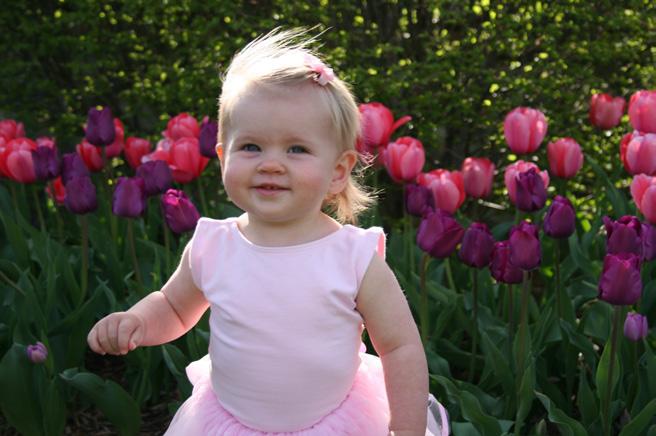


After months of essays and applications, I’m still bad with word limits – especially about something as special as The North Star. Here, I’ve met some of the most wonderful people I know. I’ve had two incredible advisers over three years; Mrs. Manglos and Mrs. Van Wyhe have exemplified how dedication, kindness and grit work together powerfully. I’ve also had two amazing co-editors-in-chief. To Caroline (who’s probably busy writing the best paper her professors have ever read) and Lexi (who I’m convinced will save the world in a few years), thank you both for inspiring me, miraculously tolerating my antics and helping
At the end of my sophomore year, I vividly remember cornering Mrs. Manglos in the 300 hall asking if there was any way I could join the North Star staff. Little did I know, that would be one of the best decisions I had made throughout my high school career. Although I have had a different experience than the rest of my North Star peers, being in second hour with the yearbook folk, I have never felt like an outcast. We all have something that bonds
When I first joined Newspaper I was a shy sophomore separated by a zoom screen with a lack of social skills. When we made it back into the classroom at the end of the year, I was amazed by my classmates’ banter. One day, I decided to chip in. I told the class about an equestrian scandal where a famous trainer was caught giving her competition horses cocaine. From that point forward I was known as horse cocaine girl.
The cocaine story was the first of many that sparked conversation, laughter and debate in
me grow as a person and journalist. To the staff, each of you are uniquely thoughtful, funny and talented. Thanks for everything – this publication wouldn’t be what it is without you, and I wouldn’t either.
Some say journalism is the lifeblood of democracy, the keystone of our political modus operandi. However, scholastic news teaches that journalism is also the lifeblood of humanity. My time on staff let me encourage people to empathize with others’ stories. For this, I am most grateful.
So much to say, so little time. With love and gratitude, thank you.
us all, our love for journalism and writing. As my time with the North Star comes to an end, I would like to thank both Mrs. Manglos and Mrs. Van Whye for developing me not only as a writer and journalist but also as a young adult. I have so much gratitude for the friendships and memories that I have made throughout my time in room 409. Lastly, to Calla, thank you for being my podcast partner in crime and bringing a happy presence to each episode.
room 411. Ella Shafer and I argued over who was Ella #1 (it’s me, I’m Ella #1) and Max Wolf and I played hand tennis until my hands turned bright red.
All of this transferred to my personal life where I learned how to be the brightest and best version of myself. Coming out of my shell and becoming involved in school were the hardest parts of high school (that and math class). I am so grateful for The North Star and the opportunity it gave me to become the brave and curious journalist I am today.
Whoever said junior year is the hardest year, they lied. Senior year is by far the hardest school year I’ve ever been through. Between struggling with calculus equations and staying up all night to write essays, I forgot to prioritize myself. But my biggest regret about school was not joining the newspaper staff sooner. I’m lucky enough to have joined the newspaper team for my senior year and it was exactly what I needed. I encourage everyone to join the publication team if you’re given the opportunity. The people I got to meet and get closer to were always
I spent the first years of high school unsure of who I was and where I wanted to be in life. I am overwhelmed with pride and am very grateful that I had the opportunity to know all of the amazing people I have connected with over these four years. I’ve had so many amazing teachers who have helped me along my path of growth and development. I need to say thank you to the ones who have made me the person I am today and pushed me to succeed. People come and go, and some might not reflect the
I first joined newspaper in hopes of expanding my knowledge of journalism and media. Prior to this class, I had no experience or expectations of what journalism was. Although I was in constant fear of last year’s web editors of The North Star, I enjoyed the thrill of scoping out stories and giving new perspectives on topics both familiar and foreign. At the beginning of junior year, I could barely speak in front of this class, but as time went on, I connected with my peers through our shared passion of journalism. Each and every one of
When I think back on my high school years, I will be overwhelmed with happy memories from room 409. The first time I walked in for yearbook class was both exciting and scary. However, I shortly learned I found my place at BVN. I had fallen in love with journalism. Whether it was taking sports photos, getting an interview or designing a page, I was doing what I love.
I would like to say thank you to Mrs.
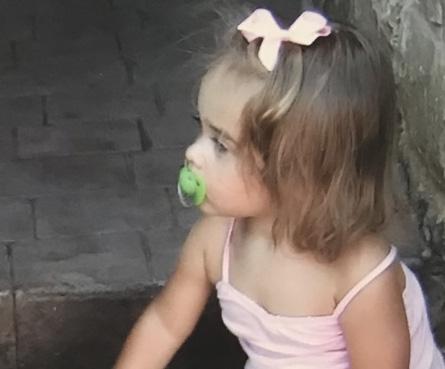
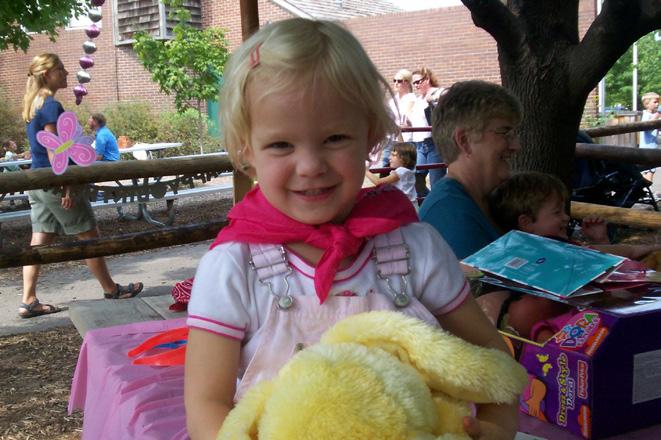


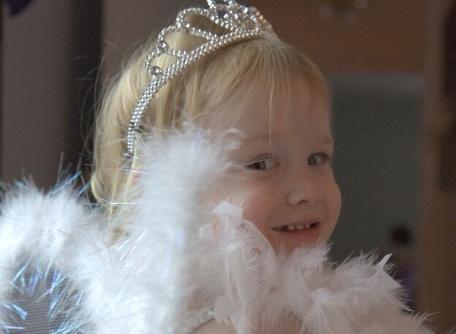
Having a blank piece of paper is always intimidating to fill, but especially when you’re supposed to cram an entire education’s worth of experiences into it… and when you talk a lot. Probably why I joined Newspaper. I’ve lived many lives just at the age of eighteen, and I couldn’t be more grateful for anyone who’s been a part of it. Throughout this, I’ve learned an important lesson. There really isn’t one. Like, anyone who has said you need to endure struggle in order to be your best self was a big liar. Absolutely, it is so important to
there for me and will forever have a special place in my heart. I realized that I really enjoy journalism and plan to minor in it at UMKC next year. So just remember to take risks and chances when they’re given to you and although high school might not be very fun now, enjoy it while it lasts. As the greatest music artist of all time once said, “If you have the opportunity to play this game called life, you have to appreciate every moment. A lot of people don’t appreciate their moment until it’s passed.”
best memories, but it’s the way you take that experience that has the strongest impact. Many of my mentors taught what it means to be not only an open-minded student, but also a good person. My time on Newspaper has opened my eyes to the amazing community that has grown in room 411. I’m excited to start the next chapter of my life with more confidence in myself and who I am.
us yearned to better the publication as well as our abilities. Looking back on these past two years, there is nothing I am more thankful for than joining this publication. This class has given me hope for a future in journalism and determination to continue doing what I love. Although I don’t necessarily know where I am headed next year quite yet, I am so grateful for all of the preparation and support I have received throughout these years. I can’t wait to see what all of the continuing staff members accomplish!
Manglos and Mrs. Van Wyhe for showing me unconditional support and pushing me to be the best version of myself. Thank you to the Northern Light staff and the North Star staff for sharing so many laughs with me. Thank you to Addie for inspiring me to apply for the yearbook staff and my parents for always supporting me. I will forever be grateful for my time on the publications staff. Thank you.
overcome obstacles, but you don’t need to wait for something bad to happen to be your best self. You can literally choose to start fresh any second. That means now. Stop reading this. If there’s any advice I have for underclassmen, it’s to literally do whatever makes you happiest. One less AP class may be the defining factor for your well being. I’m not saying to stop doing your homework, but I am saying you’re more important than the education system. At the end of the day, your transcript doesn’t matter, but your story does.



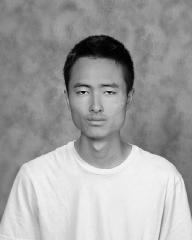









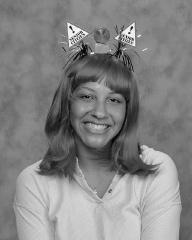


There are over 15 million high school students in the U.S. A survey conducted in 2017 by “The 74” revealed that 54% of these students don’t feel their studies are relevant to their future career paths. This means that more than eight million students are uninterested in their school’s required classes. Despite some students’ sentiments that certain classes of the Blue Valley curriculum may not directly relate to their passions, many have still learned important lessons from their classes, teachers and peers.
The class of 2023 has experienced plot twists during their four years of high school. Unlike other classes, the seniors adjusted to COVID-19 circumstances during their freshman year. Since then, they’ve undergone countless changes in their learning paths, from quarantining for over a year to coming back to in-person classes for their junior and senior years. As the class of 2023 approaches graduation, teachers and students reflected on the footprint they’ve left on each other’s lives in such a short amount of time.
Assistant Principal and Athletic Director Kelli Kurle has worked with student athletes for years; however, she said the class of 2023 has stood out to her because they have experienced many ups and downs in a short amount of time, and that she appreciates their positivity.
“These are our COVID kids that we had to retrain. Like [showing them] this is how we do stuff, this is how we do games and they’ve been so positive this year,” Kurle said.
Other faculty, such as Librarian Abby Cornelius, have left an impactful mark on students of all ages. Cornelius is admired by many students for being their support when they most needed it. Sophomore Lana Barefield said she formed a valuable teacher-student relationship with Cornelius and admires her kindness towards everyone.
“She made it really nice to have someone that I can go to and just talk about anything. She’s very supportive and caring, and she’ll give you really good advice,” Barefield said.
Instead of just helping students find books, Cornelius views her role as teaching students lessons that they can use in the future. Moreover, she said she
encourages students to begin forming their own opinions and expanding their mindset to consider others.
“We are teachers and our job is to teach library curriculum. What [that] boils down to is having to think for yourself,” Cornelius said. “So my impact on students is not the things you need to know, but also how to depend on yourself for finding information … [and] deciding what you think about the world.”
Cornelius strives to teach students valuable life lessons, and also pays close attention to their experiences. From her work with high school students of various backgrounds, Cornelius has learned a few lessons herself.
“[The students] share their stories with me. I learned that behavior is not an indicator of who you are, it’s an indicator of what happened to you … The question isn’t ‘what’s wrong with you?’ The question is ‘what happened to you?’” Cornelius said. “Your behavior is probably an exact reflection of what happened to you and what you’re coping and dealing with, not who you are.”
Based on student responses to a poll on @bvnnews on Instagram, it seemed that teachers who had the opportunity to work with the same students for more than one year had a greater impact on students.
According to Senior AVID advisor Laura O’Connell, she recognizes and appreciates the unique opportunity that AVID students have to build relationships with one another and her.
“It’s very unique in that those students are in one room together for four years with that same teacher,” O’Connell said.
Classes like AVID, with student and teacher continuity, not only positively impact students, but also give teachers the opportunity to receive honest feedback
that helps them grow. Students are always impacting teachers and the way that they teach their students, but longer length classes have a more profound effect.
“I’m honest with [the students]; they’re honest with me,” O’Connell said. “They make me think of myself as a teacher a little differently.”
Coaches are in a similar position as these long-term teachers. Senior Archer Nolan said coaches often see students grow both as athletes and as people. According to Nolan, “[Coach Wassinger] helped me get to where I want to be.”
Classes such as AVID give students and teachers the same opportunity to bond with students through seeing them grow and achieve new goals.
“I build relationships with those students that are more along the lines of a coach than a teacher,” O’Connell said.
While teachers can have a profound impact on students, so can the curricula they teach. Students felt the positive impact of classes that helped prepare them for their future. Personal Finance is a class that teaches students the financial skills they need to succeed once they leave North. Nolan credited personal finance with helping him prepare for his future.
“The knowledge that Mrs. Gossick gave us about how to do our tax forms and how to pay insurance — I’m most likely going to use that more after high school [than other classes],” Nolan said.
Personal Finance teacher Mike Hilbert said the class teaches optimization and allows for real-life applications.
“Personal Finance is all about how to be successful with money,” Hilbert said. “So that four years from now, you’ll have more money than you do now.”
While some students find general knowledge — like that taught in Personal Finance — helpful, many turn to career-
“ I learned that behavior is not an indicator of who you are, it’s an indicator of what happened to you … The question isn’t ‘what’s wrong with you?’ The question is ‘what happened to you?’”
– Abby Cornelius
Students often debate whether school curriculum and teachers are positively impacting their life. What will BVN seniors takeaway from their four-year experience?
Jessica Assafeen,
specific classes.
The Center for Advanced Professional Studies (CAPS) gives juniors and seniors the opportunity to explore an array of career paths. Some of the most popular branches include law and health. The CAPS health strand gives students the chance to try a multitude of health-related career paths in classes such as Sports Medicine and Nursing, as well as more generalized exploration in Foundations of Medicine, which senior Rithvik Tadakamalla takes.
“In school you have to follow a curriculum, and it’s not self-learning,” Tadakamalla said.
A Harvard study found that students in classes that employ active learning, compared to a lecture, learn better. These classes started with students problem solving and collaborating with peers over new material. This collaboration was followed by a short, targeted lecture. The problem-solving and collaboration style is more conducive to learning, and students
saw better results. Many popular classes at BVN implement such teaching styles.
“There were more activities and group work instead of just note taking,” Nolan said. “It was pretty interactive which is why I got more out of [Personal Finance].”
While it’s not uncommon to find this teaching style in a classroom, it is a fundamental principle at CAPS. CAPS aims to help students “realize their strengths and passions,” according to its website, by exploring new areas of interest as well as diving deeper into fields for the future. Students at CAPS are given the opportunity to learn in an unconventional setting about topics that matter to them. When deciding to enroll in CAPS, students choose classes that spark their interest as well as give them
a sense of progression toward their life goals.
“CAPS has helped me explore the field I want to be in,” Tadakamalla said.
This combination of active learning and interest-based commitment creates an environment that cultivates student success. Students enrolled in classes that challenge conventional learning methods and address topics of interest or practicality said they feel a greater positive impact. These classes, such as School Store, give seniors the opportunity to improve their leadership skills and guide underclassmen and class initiatives. In School Store specifically, seniors have the ability to earn managerial roles and lead a specialty line. Novelty line manager and senior Ginger Minderman said managers lead a team of students, ranging from sophomores to seniors, to run the store smoothly.

“We’re kind of like home bases for each line,” Minderman said. “Everyone else comes to us.”
Leadership opportunities, like manager positions, allow seniors to gain real-world, hands-on experience before graduating. While these classes are impactful for seniors, they also allow seniors to impact BVN. Managers in School Store help choose their successors each year as well as teach underclassmen how to continue running the store. Minderman has been working to prepare materials for next year.
“We are compiling notes and powerpoints right now to give and pass down about protocol and how things work,” Minderman said. Mentoring and leading underclassmen will help to continue the seniors’ legacy. While the senior class of 2023 will soon be graduating, both the impact they left on the BVN community and the impact the BVN community has had on them will remain for years to come.
“ In school you have to follow a curriculum, and it’s not self-learning.
– Rithvik Tadakamalla “Page 14: Minderman and Nolan dress up for their senior photos. Photos by Rolland Studios. Left: Ginger Minderman checks outs a customer at The Stampede. Photo by Alex Robertson


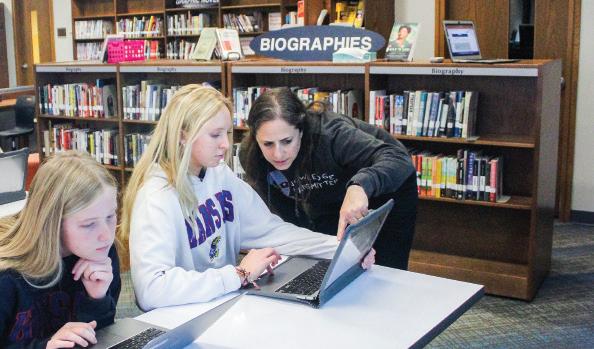
Numbers represent the amount of students pursuing post-graduation plans in a certain state.
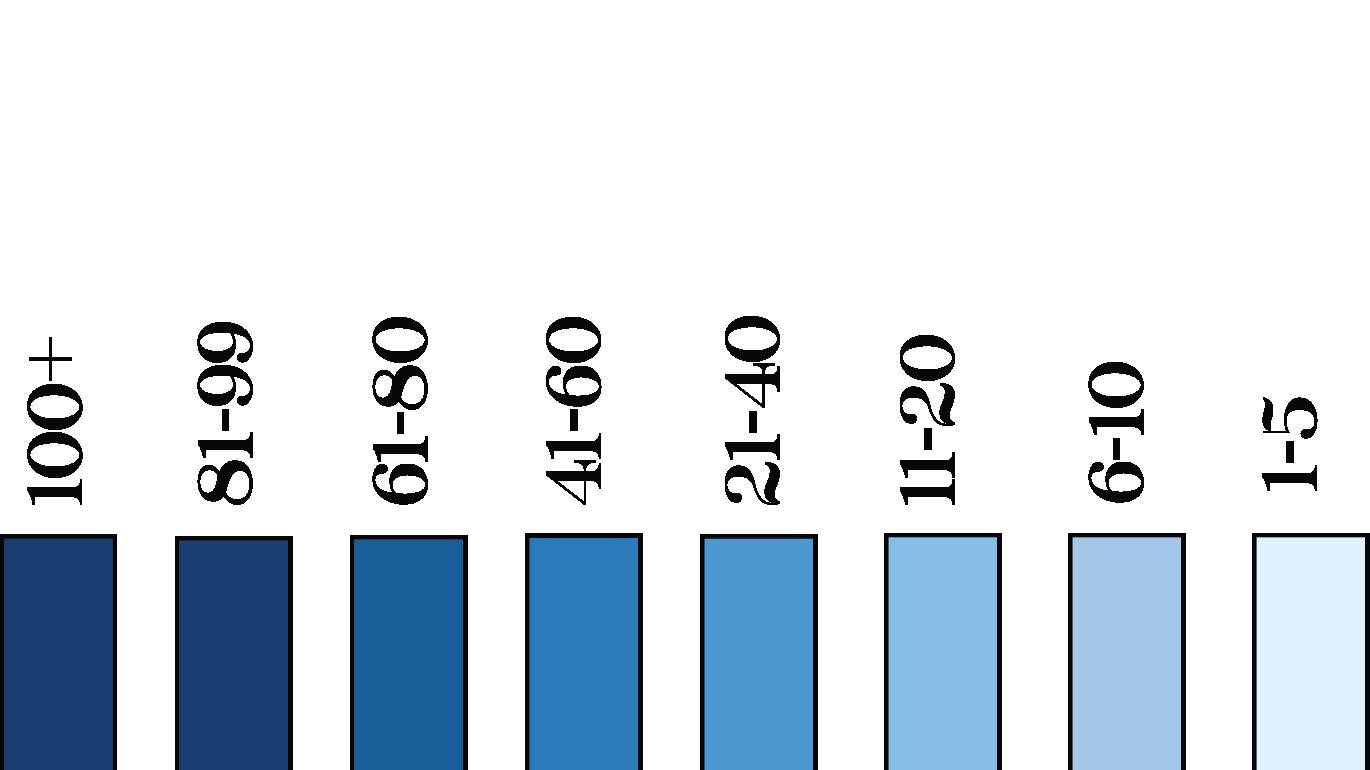

UNIVERSITY OF KANSAS
Sydney Adams
Disha Ahuja
Jack Allen
Jack Alverson
Jessica Assafeen
Julia Ballew
A’Taya Benson
Will Bernard
Jessica Bishop
Abby Bleish
Rachel Braun
Luke Brethour
Charlie Brethour
Hudson Brown
Miller Brown
Paige Browning
Louise Caron
Celina Caron
Shrey Chaturvedi
Muhammad Daud
Henry Day
Henry Edgeller
Harlan Eitzmann
Brady Fisher
Ava Fox
Shelby Gartner
Abby Gold
Katherine Goodwin
Cooper Graham
Nakisha Guzman
Mohamad Hamdan
Libby Hatton
Justyna Hayslett
Luna Hill
Aneesh Hiremath
Caleigh House
Gabriella Indiveri
Senara Kularatne
Aiden Klieve
Audrey Kohnen
Katherine Koplik
Lida Martin
Reece May
Courtney McCray
Andrew Meierotto
Meranda Mercer
Patty Morales
Alexa Olmos
Zane Park
Audrey Patterson
Lily Ren
Nash Rosado
Zachary Rostberg
Aarjo Roy
Zach Sand
Jameson Sayers
Ella Schenk
Jacob Schneller
Michelle Shin
Sakthivel Sivasubramanian
Maia Sol
Nathaniel Sovereign
Caden Stark
Sean Sullivan
Sam Sullivan
Nabihah Syed
Drew Tasset
Elie Textor
Dominic Thompson
Will Wallace
Davis Wetmore
Brooklyn Wisdom
Naima Wishom-Lucas
Johnson County
Community College
Fares Assaad
Madox Bond
Brandon Castro-Guzman
Grace Caswell
Adrien Fiegl
Pablo Flores-Fierro
Brenden Gantman
Steven Golfinopoulos
Isabel Hernandez
Bijon James
Atticus Jones
Ethan Jones
Mason Jordan
Gabriella Kern
Estephania Luna
Parker Maher
Lakshmi Sindhura Marella
Asher Mathews
Alexa Medina
Jackson Mulligan
Molly Ramsey
Cooper Reed
Bradley Robertson
Mark Roth
Amadou Sow
Tommy Storm
Antonia Swenson
Lauren Tolman
Will Tongier
Henry Vaupell
Alexis Venable
Jake Williams KANSAS STATE UNIVERSITY
Supriya Bolla
Addison Brandau
Kelsey Chellberg
Emma Gaebler
Agam Gur-Esh
Hayden Hartsell
Sophia Hernandez
Tilly Hopkins
Joe Hudson
Drew Jacobi
Brynna MacAdam
Izzy Miller
Joey Presley
Kadin Ruble
Jeffrey Veltri EMPORIA STATE UNIVERSITY
Staysha Ellinger
Eva Marie Girard
Alden Mollerus
Gabe Tywater PITTSBURG STATE UNIVERSITY
Matthew Akridge
Rhett Dice
Parker Field
Blake Garrett
Cameron King
Drew Nugent
UNIVERSITY OF MISSOURI-KANSAS CITY
Reed Eason
Sophie Flamm
Mohammad Jarrad
Ayden Miguel
Katy Nguyen
Mae Tuschman UNIVERSITY OF MISSOURI
Dalton Barnes
Caroline Lieberman
Max McConnell
McKinley Van Slyke
Charlie Weber KANSAS CITY ART INSTITUTE
Natalie Blood
Emma Carr
Allyson DuVall ROCKHURST UNIVERSITY
Jackson Goldberg
Archer Nolen
Stella Scoggin WASHINGTON UNIVERSITY, ST. LOUIS
Rahul Chavali
Asher Kort WESTMINSTER COLLEGE
Richard DeCola
Marley Velasquez MISSOURI STATE UNIVERSITY
Andrew Savoy MISSOURI WESTERN STATE UNIVERSITY
Makei Washington UNIVERSITY OF CENTRAL MISSOURI
Alexander Perez TRUMAN STATE UNIVERSITY
Merritt Gregory
UNIVERSITY OF ARKANSAS
Grace Bryan
Nora Carlsen
Nicholas Hayob
Lakin Hobrock
Maya Ivkovic
Taylor Miller
Naomi Roening
Ava Ryan
Cara Spratlin
Bethany Wilkie UNIVERSITY OF ARKANSAS -FORT SMITH
Sophia McIntyre
UNIVERSITY OF ARIZONA
Alec Bauer
Cole Bauer
Kaitlyn Garberg
Kate Miller
Ginger Minderman
Sally Mondry
Emma Razi ARIZONA STATE UNIVERSITY
Gabriel Kudi
Starlee Smith NORTHERN ARIZONA UNIVERSITY
Reese Condon
DEPAUL UNIVERSITY
Ellie Goldberg
Cassandra Pyle
Kakie Vrana NORTHWESTERN UNIVERSITY
Hannah Kwak
Oliver Zhang BRADLEY UNIVERSITY
Ella Shafer
LOYOLA UNIVERSITY CHICAGO
Abi Patterson QUINCY UNIVERSITY
John Sjoberg
SOUTHERN METHODIST UNIVERSITY
Katherine Hutchison
Alex Srivastava
Harris Wilson
TEXAS CHRISTIAN UNIVERSITY
Devereaux Knight
Ella Thomas
Tate Wichman
SAN ANTONIO COLLEGE
Timothy Pruitt UNIVERSITY OF HOUSTON
Liza Zheng
CALIFORNIA
CALIFORNIA STATE UNIVERSITY
Hannah Ouang STANFORD UNIVERSITY
David Stutz UNIVERSITY OF CALIFORNIABERKELEY
Prabhav Pagadala UNIVERSITY OF CALIFORNIA-IRVINE
Austin Lo UNIVERSITY OF CALIFORNIA-LOS
ANGELES
Michael Mayo UNIVERSITY OF SAN DIEGO
Calla Jordan
IOWA STATE UNIVERSITY
Alex Bellm
Alana Campbell
UNIVERSITY OF NORTHERN IOWA
Alonzo Morgan
Walker Schmidt DRAKE UNIVERSITY
CJ Smith
UNIVERSITY OF NEBRASKA
Elton Eshleman
John Fischbach
Katherine Heese
Leah Helfer-Ross
Charlie Mathews
Laken Riekhof
Ava Turk
FLORIDA STATE UNIVERSITY
Caroline Welhoelter
UNIVERSITY OF CENTRAL FLORIDA
Jaxon Goldberg UNIVERSITY OF SOUTH FLORIDA
Aaron Beam
INDIANA UNIVERSITY BLOOMINGTON
Preetish Chigurukota
Brenden Wood PURDUE UNIVERSITY
Jaren Khiew
UNIVERSITY OF INDIANA
Audrey Fendler
UNIVERSITY OF MICHIGAN
Matthew Fisher
Sanvika Inturi
Joe Thummel
NEW YORK
CORNELL UNIVERSITY
Kayoko Thornton NEW YORK SCHOOL OF INTERIOR DESIGN
Kayla Suazo
NEW YORK UNIVERSITY
Eric Garretson
THE OHIO STATE UNIVERSITY
Nathan Bronson
Nolan Call UNIVERSITY OF CINCINNATI
Caitlyn Choal
PENNSYLVANIA
CARNEGIE MELLON UNIVERSITY
Johnathan Subramanian
PENNSYLVANIA STATE UNIVERSITY
Paige Brown
UNIVERSITY OF PENNSYLVANIA
Rima Chavali
BELMONT UNIVERSITY
Carson Faros
Riley McConnell VANDERBILT UNIVERSITY
Aneesh Vasamreddy
OTHER STATES
ALABAMA
AUBURN UNIVERSITY
Trent Damico
UNIVERSITY OF ALABAMA
MacKenzie Thorpe COLORADO COLORADO STATE UNIVERSITY
Anna Zmijewski
UNIVERSITY OF
COLORADO
Harrison Smith GEORGIA
SAVANNAH COLLEGE OF ART AND DESIGN
Ben Fine
UNIVERSITY OF GEORGIA
Meghan Coleman HAWAII
CHAMINADE UNIVERSITY OF HONOLULU
Meghan Coleman LOUISIANA
LOUISIANA STATE UNIVERSITY
Trenton Sandler
TULANE UNIVERSITY
Rithvik Tadakamalla
MASSACHUSSETTS
HARVARD UNIVERSITY
Luke Chen
Lizzie Place MARYLAND MORGAN STATE UNIVERSITY
Zoe Thomason MINNESOTA
UNIVERSITY OF MINNESOTA
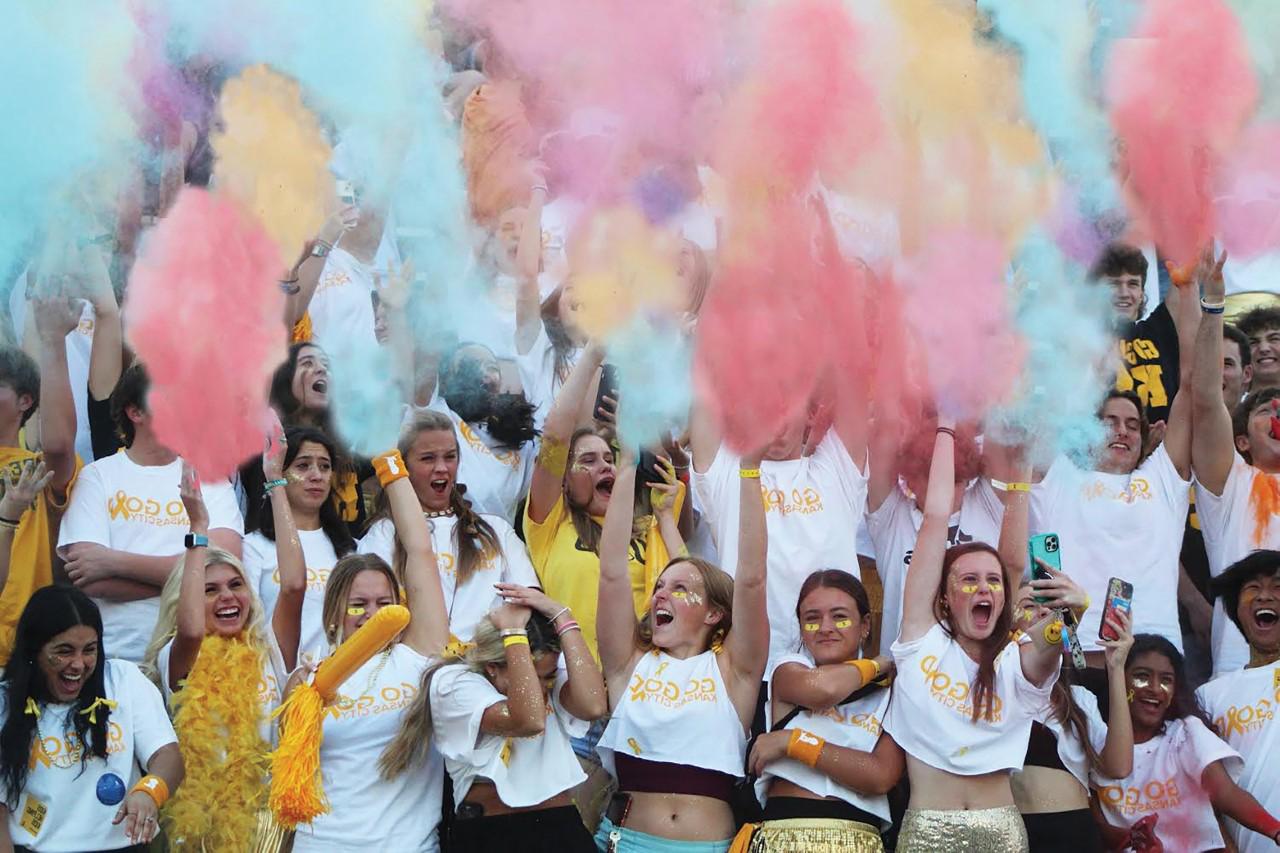
Max Blinn MISSISSIPPI
UNIVERSITY OF MISSISSIPPI
Ellie Shertenlieb
NORTH CAROLINA
HIGH POINT UNIVERSITY
Sumner Dowdy
NORTH CAROLINA A & T
Ella Riley
NEW HAMPSHIRE
DARTMOUTH COLLEGE
Joy Yan NEW MEXICO
NEW MEXICO STATE UNIVERSITY
Adam Parks
SOUTH CAROLINA
UNIVERSITY OF SOUTH CAROLINA
Ellie Hargens
SOUTH DAKOTA
AUGUSTANA UNIVERSITY
Madisyn Stogsdill UTAH
By Ella Thomas and Ella ShaferBRIGHAM YOUNG UNIVERSITY
Kelehua Brown VIRGINIA
UNIVERSITY OF VIRGINIA
Arshiya Pant WASHINGTON
UNIVERSITY OF WASHINGTON
Ben Jordan WISCONSIN
MARQUETTE UNIVERSITY
Sophia Cherafat
UNIVERSITY OF WISCONSIN
Zachary Amsterdam
INTERNATIONAL ITALY
ISTITUTO PREALPI
Alessandra Adriani
UNIVERSITY OF PADUA
Elisa Veneri
CANADA
UNIVERSITY OF WATERLOO
Maryam Zeb
FRANCE
ST FELIX-LA SALLE
Gabi Tiberghien
DENMARK
UNIVERSITY OF COPENHAGEN
Mariana Lopes
BELGIUM
SAINT-LOUIS UNIVERSITY
Alice de Dorlodot
OTHER PATHS
Mallory Bowers
Morgan Yoakum
Tommy Storm
MILITARY
Mark Brackett
Beckham Fancher
Cooper Reed
UNDECIDED
Micah Broekhuizen
Matthew Peng
Wes Trotter
FRIDAY MAY 12
PICK-UP LOCATIONS:
seniors-senior picnic underclassmen-new aux gym
All seniors were notified of this survey. Unfortunately, not all were able to respond. This data is representative of 281 seniors who responded, or were able to provide further information upon contact.By Madisyn Stogsdill
With graduation approaching, some students are reflecting upon their high school experiences: the classes they took, the teachers they had and the rumors they heard. These whispers often only reach a certain audience, consequentially remaining unknown to others. What are these BVN myths and conspiracies, and how have they affected certain students’ experiences?



An anonymous source talked about how one of the oldest secrets, Fight Club, began at BVN.

“Fight Club started way before my attendance here at North,” they said. “If you’ve heard stories, it’s mostly from upperclassmen or people that have already graduated. Since the organization died out as soon as COVID hit, nobody really talks about it anymore.”
Since the pandemic disrupted large gatherings of students, communication relied on technology. Rumors were
spread through text rather than whispers in the hallway.
“Fight Club was already so unknown, [and] the pandemic hid it even more,” they said.
Although some older rumors have died out and been put to rest, new anecdotes continue to emerge. A recent account revolves around a substitute teacher writing on a Smartboard with an Expo marker. A student in the class at the time, junior Caleb Deng, said he felt shocked.
“We had a sub, and he wouldn’t really talk to us … and then he started writing the password to the test on the Smartboard.
specifically, and we would hear them everyday and see them scurrying around. They were falling from ceilings,” DuVall said. “I was in the classroom next door to where the rat fell, heard the screaming and walked in to see a girl pick it up. She picked up the mouse [and] it bit her. She had to go to the nurse.”
Yet rodent-related myths also exist outside of the 600 hallway.
“It’s funny, we have a mouse problem because there’s this painting in the [theatre] shop. It’s called the Red Rat. The whole myth around it is if you touch it, something will go wrong in a show or something,” DuVall said. “We’ve had people touch it and then the power won’t turn on or we have to close school because of snow and miss a performance.”
Though rumors can often lose meaning as they are spread through the student body, these whispers allow students to bond over a shared
was trying to erase it at the end of class to be like a good person, but it was just smearing everywhere.”
Senior Allyson DuVall offered another anecdotal experience.
“We’ve been having a mouse problem in the 600 hallways
“
If you’ve heard stories, it’s mostly from upperclassmen or people who have already graduated. Since the organization did out as soon as COVID hit, nobody really talks about it anymore.
– Anonymous “From rodents to substitue stories, students share the inside scoop on the secrets of BVN.
Social classifications can be determined by a person’s social limit and the rate it takes them to recharge. Extroverts and introverts are commonly used to differentiate these two types.
Senior Ellie Textor considers herself more extroverted and said that being socially active helps her get through the school day.
“I love being with people constantly and I want to be around people all the time,” Textor said. “I have to put up boundaries on being solo when it comes to working in class and doing homework because if I’m in a group, I tend to get off topic.”
Although Textor needs daily social interaction, she said it can still drain energy from her social battery. She said she reserves time on weekends to recharge for the school week.
“Throughout the weekdays, I’m super social because of school and my constant extracurriculars,” Textor said. “However, on the weekends, like Sunday, that’s my time to recharge, and I don’t usually hang out with people. I usually just spend time with family.”
Textor said her relationships are affected by others’ social batteries, as she has to balance the varying amounts of social stimulation her friends and family need.
“Especially with my brother, he likes alone time … so I have to respect his boundaries, whether he says, ‘Can you leave me alone in my room?’ or ‘I don’t really want to hang out right now, can we do something later?’” Textor said. “I have to respect their boundaries because that’s what I’d want them to do for me, so I keep that in mind.”
Textor said the best way to navigate her friendships with introverts is to establish boundaries to measure how much alone time her friends need.
“I have a couple of friends who are more on the introverted side, and just like with my brother, I have to respect their boundaries,” Textor said. “I can’t expect them to hang out with me throughout the whole day; I know they need their own time.”
Textor has also noticed a correlation between BVN’s social scene and how introverts’ needs can hinder social opportunities.
“I feel like if you’re more extroverted, you have more opportunities to be invited to more things just because they’re around a lot more people,” Textor said. “And for some people who are introverted, they can feel excluded just because instead of spending time with others, like extroverts, introverts are spending time alone.”
Although extroverts need social interaction, being social can still be draining for extroverts. Like introverts, they may also need time to recharge.
“Sometimes people think that extroverts don’t need time to recharge or don’t get overwhelmed, but in certain situations, I’m the type of person who can get overwhelmed easily,” Textor said. “Extroverts need their own alone time, same as introverts, but I feel like extroverts are able to recharge their social batteries faster, versus introverts who need more alone time.”
In contrast to extroverts, students like junior Karen Kim may need more time to recharge their social batteries. This may make school a challenge as the forced time commitments can affect introverts’ routines and other aspects of their lives.
“I’m more introverted because I
The BVN student body is comprised of introverted and extroverted students, which has an effect on the energy and relationships of students on a daily basis.
genuinely have to have time by myself, otherwise I get really cranky and annoyed,” Kim said. “I dread school because I have to socialize with people, and I just don’t want to.”
Social aspects aren’t the only challenge introverts find at school; they also face prioritizing work over their time to recharge, which can make it difficult for them to stay energized throughout the day.
“I’m taking three AP classes right now which makes it difficult to socialize, which isn’t bad for me, but at the same time, it also makes it harder for me to actually recharge on my own,” Kim said.
Kim has found that her extroverted friends have been understanding about what she needs to operate, and try to accommodate her social battery.
“A lot of my friends are extroverted. They kind of understand that I can’t or don’t really want to hang out every single
day of the week,” Kim said. “I also don’t like to go to extremely crowded places, so I typically hang out with my friends by going shopping or to a coffee shop, rather than [to] concerts or amusement parks.”
According to Kim, BVN is a more social community, which isn’t helpful for introverts who shy away from the emphasis on social interaction.
“My personal observation is that a lot of people [at BVN] really enjoy socializing with other people. Typically when I get moved to a new table or something, another person is usually the first person who tries talking,” Kim said. “Especially with what I see on social media, I feel like Blue Valley North kids really just like hanging out and going out with friends a lot.”
Even though Kim believes BVN to be more extroverted, she still thinks that more people are introverted than it may seem.
“I’ve met people who are more like me, where we’ll reserve an entire day just
to recharge, and I’ve met other people who need to consistently hang out with their friends otherwise they don’t feel their best,” Kim said.
Even though Kim enjoys social events, she has learned to consider how going out might affect her emotionally.
“I’ve learned a lot about myself, and I value that alone time, which I know some people don’t like because they can overthink things while they’re alone,” Kim said. “But on the other hand, my social battery drains immediately. For example, for Homecoming, I didn’t even go to an afterparty, but I woke up the next day and I was like, ‘I can’t even do school this week.’”
Kim said that she believes that not all introverts are against being social, but that they just use more energy to do so, which makes them hesitant to socialize.
“I’ve met a lot of social introverts, especially at North, because I think there’s a misconception where if you’re extroverted you’re super social, and if you’re introverted, you’re antisocial, but you definitely can be a social person and still be an introvert,” Kim said. “Being an introvert technically only means you need time to recharge by yourself … I think it’s definitely possible for someone to have a loud personality and still need time to recharge by themself.”
Time Needed to Recharge: longer
Battery Efficiency: low
Takes the Most Energy: social interactions
Activities to Recharge: watching movies, reading a book and other individual activities
How to be a Friend to an Introvert: respect social boundaries
Time Needed to Recharge: shorter
Battery Efficiency: high
Takes the Most Energy: social interactions
Activities to Recharge: hanging out with close friends or family and individual activities
How to be a Friend to an Extrovert: respect social boundaries
* Information collected from interviews
“
Sometimes people think that extroverts don’t need time to recharge or don’t get overwhelmed, but in certain situations, I’m the type of person who can get overwhelmed easily.
– Ellie Textor
Why and how students should take part in gardening.
By Bennett PalmerSince 2015, April has been National Gardening Month.
This is a time when all Americans are encouraged to get outside and take part in this peaceful pastime. Gardens are not only a relaxing space, but also a useful and welcoming area for bees, butterflies and several species of birds. These spaces serve an environmentallyfriendly purpose as well, as plants act as effective aircleaners and absorbers of carbon dioxide and pollutants,
while releasing oxygen and pleasant scents.
A garden is something that many often have trouble starting or maintaining, especially students. Many students are interested in gardening, however there seems to be little time in their busy schedules. There are plenty of misconceptions about gardening; ‘it takes up too much time’, ‘it’s difficult to maintain’ and ‘the product is not worth the effort.’ Are there any truths in these misconceptions?
There are plenty of spots to start a garden around your house — whether it be in your backyard, front yard or even a porch or patio. Avoid lowlying (near sea-level) areas. Plant roots need oxygen, and vegetables are particularly sensitive to being submerged. If your bed is raised, place newspaper or cardboard under the coil to separate the soil.
A forgotten process in starting a garden is testing the soil. For better results, visit a lab to get soil tested. To test at home, place 2 tablespoons of soil in the bowl and add ½ cup vinegar. If it fizzes, it is alkaline soil, which is more difficult to cultivate in. Add more compost to alkaline soil, so plants will not have to adapt to conditions that come with it and acidic soil.
Now for the final step (and the most fun)! Harvesting is only possible if one checks daily. Once the crops are ready to be harvested, remember two vital things: pick small and be very gentle. Always watch when stepping, as destroying or damaging a crop would ruin any progress you’ve made thus far. For specific plants, harvesting instructions can be found on the seed packet itself or are easily available online.
While this step contains a healthy amount of tedium, thinning out a garden is one of the most beneficial and necessary steps. Use garden snips or scissors to thin out crowded seedlings. When the first true leaves appear, snip off the extra seedlings at the soil line.
There are a few methods to planting seeds (there are usually instructions on the seed packet you buy), but this will explain the trough method. Using two fingers, dig a very shallow trench. Sprinkle the seeds lightly and evenly along the length of the trench, then gently push a thin layer of soil over the seeds to close up the trench that was just dug. When first planting your seeds, be generous with water spray, although when regularly watering plants, focus more on the base of the plant. Avoid spraying the leaves of plants.
Work a 2-3 inch layer of compost into the soil with a shovel. Smooth the surface so that it is ready to sustain the plant when the weather is appropriate.
If you’re struggling with deciding on what to plant in your garden, here are some common and easy-to-manage veggies you can try out! All of these vegetables can be planted during the spring, and can be incorporated into multiple springtime recipes.
Science teacher Christopher Ollig’s classroom includes three windows, eight lab tables, four class pets, sixteen tables for students and six indoor plants. Senior Sophia McIntyre has a room full of greenery. From teachers to students, whether in the classroom or at home, many people grow and maintain plants. What is the value of this hobby?
Ollig said he likes having plants inside his classroom and suggested every teacher should have a plant in their own classroom, but acknowledged not every teacher can.
“I think it’s hard because a lot of classrooms don’t have windows, but I’ve got plants shoved in every window that we have here,” Ollig said.
According to a Washington State University study, “What are the Benefits of Plants Indoors and Why do we Respond Positively to Them?”, one of the ways plants affect humans is through the physical changes that plants cause in their surroundings.
Foliage and plants can increase humidity levels to healthier and more comfortable levels indoors. The study reported that the humidity level was raised from 25% to 30% with plants present, which keeps humidity in the recommended 30% to 60% range.
McIntyre said she noticed a difference in air quality and brightness after starting to put plants and greenery in her bedroom.
“Plants are a nice way to add a brightness to your room. It makes the air feel cleaner. It makes you feel better,” McIntyre said.
McIntyre had two live plants and five fake plants indoors. She put the plants in her room during the COVID-19 pandemic, when she spent an increased amount of time inside.
“I do like my plants, and I think they add a good aura to my room,” McIntyre said.
In addition to increasing humidity levels, indoor plants can increase productivity and positive feelings in humans.
“I think plants not only help with air quality, which is good — it helps keep the air clean and oxygenated which is obviously good — but I think it also impacts people’s emotional well-being,” Ollig said. “I think it increases emotional well-being when plants are in the classroom.”
Ollig also said he enjoyed having plants in his classroom for the overall atmosphere.
“[Plants] just add to the atmosphere. It makes it feel more comfortable and brings stress levels down. I think and I hope it does anyway,” Ollig said.
Along with McIntyre and Ollig, multiple students at BVN have shown off their indoor plant collections.
“I have several students who have shown me their house plant collections, and they’ve got me beat. I have a lot of house plants but some of my students just have amazing collections,” Ollig said.
Indoor plants helped keep air clean, regulate humidity levels and boosted emotional well-being. McIntyre said each student “should have a plant.”
“
[Plants] just add to the atmosphere. It makes it feel more comfortable and brings stress levels down. I think and I hope it does anyway.
– Christopher Ollig
High School is a popular topic in movies and TV, but how accurately is it portrayed?
Football games, school dances, assemblies and … singing on tables? For decades, American media has created a stereotype of the high school experience. Whether it’s a knee-slapper novel or a moving comingof-age film, media often explores the ins and outs of American high school. But how real is it all?
From “Victorious” to “Shake it Off” to “Bella and the Bulldogs”, students grew up on a variety of media featuring different versions of what American high school would supposedly look like. According to junior Amelia Law, expectations don’t always fit the reality.
“A month before I moved here, on the plane to the U.S., I watched ‘Mean Girls’. I essentially based my entire perception of the high school experience off that movie alone. It was interesting first walking in the school because it’s like, ‘Oh my God, I feel like I’m watching a movie set. This is crazy,’” Law said. “‘[There are] actual lockers? What on earth is going on?’ And then everyone’s in sweatpants. That was unexpected. Everyone is in sweats.”
Even seeing common activities and sports such as cheerleading on TV and in movies shaped the way Law expected high school to be.
“Cheerleaders were fascinating. For the longest time, I genuinely thought that they weren’t real. I thought they were just Disney propaganda,” Law said. “How is it believable? You have a bunch of girls doing gymnastics at a side on the track during a football game. I thought it was just another way for Disney to make high
school look appealing.”
Besides the inclusion of realistic high school experiences, such as cheerleading, media often includes common stereotypes in stories centered around high schools. School cliques portrayed in media are one thing TV and movies get right, according to senior Tilly Hopkins.
“I feel like when you watch a lot of TV shows [and] movies, you see how everyone’s involved in different cliques. Especially [in] ‘Bratz’, it gets really cliquey because of the cheerleaders,” Hopkins said.
In addition to cliques, senior Eliza Veneri said media correctly portrays the relationship between students and their teachers.
“The one with the teachers … You’re really friends with them or when you maybe make fun of them in a good way. That’s funny because even to my teacher [in Italy] I didn’t say, ‘How was your weekend?’ which is odd because it’s a normal thing,” Veneri said.
Hopkins said there were also some glaring differences between what she saw on screen and what she experienced.
“If you’ve watched ‘Victorious’, you see how colorful it is and it’s portrayed as a really happy environment. And then you come to a normal school and … [there] tends to be like three solid colors, and the environment [at BVN] is just not like that,” Hopkins said.
Law grew up in Hong Kong and finds a disconnect between what she saw on screen and what she sees at school.
“It’s much more social than I thought
it’d be. Honestly, it plays pretty well into the stereotypes. Really insane things happen a lot. Football games are a thing. Like, you guys have three dances a year. That’s insane,” Law said. “Also not everybody is in sports or something like that. Because in the movies that you see, everyone is on the football team or on the volleyball team. Here I found a lot of people that say, ‘Oh no, I don’t like watching sports or I don’t like to go to the games.’”
Many stereotypes and parts of the high school experience are included in popular culture, but according to Veneri, the media still misses crucial parts such as mental health.
“I think it’s a normal thing, but … the mental health part,” Veneri said. “In [most] TV shows you see them [ignoring mental health], maybe besides shows like ‘13 Reasons Why’. They’re like, ‘Oh my God, [school] is so cool [and] it is so fun,’ while in real life I’ve heard a lot of stories of people who are struggling.”
In addition to including mental health in media narratives, Law thinks realistic studying should be shown to viewers.
“People holding and reading a book. People talking about how they’re going to die taking this test. Because it’s so messed up when you watch and nothing is about school, but it’s set in school,” Law said. “It just messes with your head. Like, ‘oh, am I just gonna not care in high school? Is that just not a thing anymore?’”

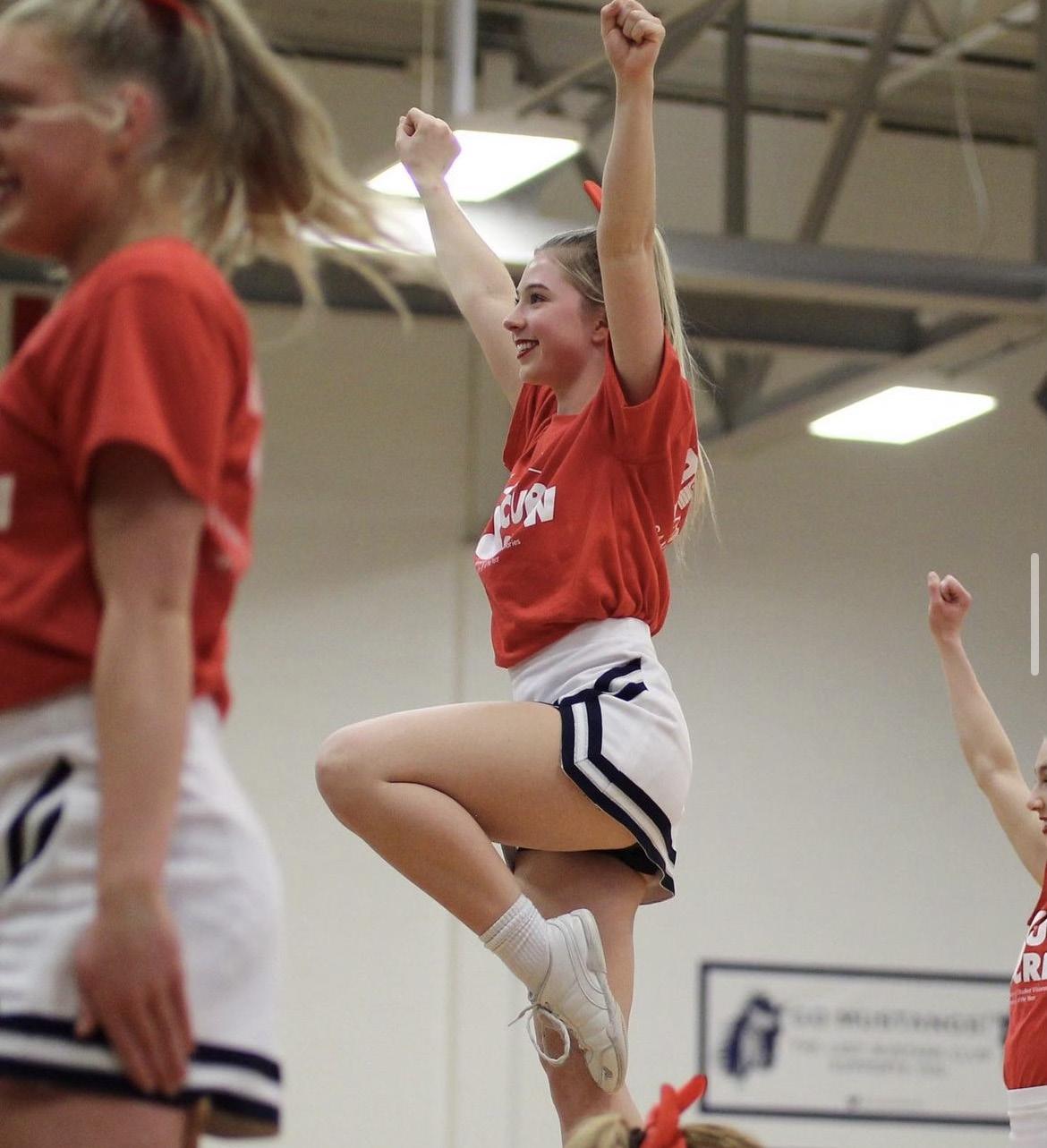

Being a dancer often means dealing with the toxic environment that can come along with it, including mental health issues and unrealistic body standards. How do BVN dancers handle this?
By Anjali KambhampatiContent Warning: mentions of eating disorders and body image.
Relevé. Strengthen your core. Keep your arms in the right spot. Turn.
These are the small details that junior Audrey Branner keeps in mind while dancing. Dance is a form of expressional release that comes with both positive and negative effects. How do dancers at BVN deal with the environment that comes with participating in dance?
Branner said that there are a lot of things to remember for one small movement in dance, and that it can be a bit stressful at times. However, from her experiences dancing since she was 10 years old, she has embraced the positive effects of dance, such as improving physical health and reducing stress and anxiety.
“Dance is exercise, and exercise is really good at getting rid of stress and keeping your body healthy,” Branner said. “It is a way for me to be healthy without being as harsh on my body. For example, I did track for a little bit, but it just ended up being harsh on my ankles. You would think dance would be worse, but I feel like my body can handle a lot more.”
Studies conducted by WebMD have shown that dance improves social and emotional health.
“I have a lot of friends and we feel very close. It’s a really good experience, friendship- and connectionwise,” Branner said.
While dance has been proven to be a positive release form, a competitive dynamic can emerge. This can create an environment of fear, doubt and worry. The dance environment can give dancers the determination to succeed, but can also increase anxiety and perfectionist tendencies. These tendencies can lead to unhealthy behaviors.
“With dance, there’s a lot of pressure
– Audrey Brannerto be good at everything,” Branner said. “I feel like now, especially because I’m on [a competition] team, you have to be good at a lot of different styles in dance, even though most of the time I’ve been doing hip hop or jazz as my main [styles]. I feel like in other spots, you can be good at one thing, and then really
build on that, which kind of lessens the pressure.”
At times, dancers face toxicity from teachers or other competitors based on certain standards, such as looking or moving a certain way. While their physical health is constantly improving due to the physical activity, many dancers ignore

“
I feel like there just needs to be a bit more forgiveness when it comes to your body not looking perfect or not being able to do a certain thing because you body just doesn’t move like that.
their mental health, which may suffer due to pressures they face from the studio and stage. Branner is aware of the unhealthy side of dance culture, and said a lot of dancers face health issues.
“A lot of people have the mindset of ‘oh, I need to look this way’ or ‘oh, I need to look that way.’ It’s tough,” Branner said.
According to Branner, her teachers have been very supportive, understanding and forgiving. She said that instead, that toxicity can be a result of competition.
“Maybe if you’re at a competition and you felt as though your dance went really well or really badly and you got a different place than you thought it deserved, you can start to feel compared to other studios, or maybe other studios are being compared to you,” Branner said. “It can cause a lot of tension when really at the end of the day, we are all aiming for the same thing and it’s just one day of three people’s opinions on whose dance was the best.”
If she could change something about the dance environment, Branner said that it would be the pressure on aesthetics.
“Not even just how your body looks, just how much you body can move. It’s a hard thing because for me personally, I just feel like my back has never been super flexible. It’s hard because I feel like there are a lot of things I can’t do
because of it,” Branner said. “I feel like there just needs to be a bit more forgiveness when it comes to your body not looking perfect or not being able to do a certain thing because your body just doesn’t move like that.”
Senior Hannah Chong has been dancing for 14 years and said that her overall experience was both positive and negative.
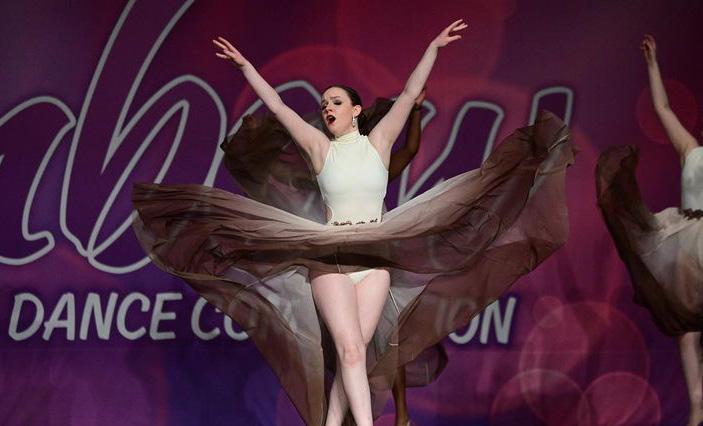
“I can’t say the experience was more positive or more negative. There’s a good side where you can express yourself and get emotions and stress out, but the negatives are body dysmorphia, a lot of different eating disorders and a lot of hard criticism of yourself,” Chong said. “This can be hard on your mental health.”
Chong also said that facing toxicity from competitors can be hard on your mental health because you are friends with everyone while competing with them at the same time. Despite the negativity that dances often receive, Chong said that teachers have been very supportive.
“[Teachers] don’t criticize the way you look; they just try to help you be better,” Chong said.
Although there are many aspects that can cause dancers to navigate issues with their mental health, Chong said that dance gives her an outlet for many other issues that also contribute to her mental health.
“Whenever I have a bad day at school and I just go to dance, it releases so much stress,” Chong said. “I don’t even remember what I was thinking about.”
1 in 2 female dancers do not meet their energy needs
Dancers have a higher risk of suffering fro eating disorder3x
1 in 3 male dancers do not meet their energy needs
Statistics provided by Dance Nutrition, Teen Rehab, and The Statesman
Quick, easy recipes come in handy for rising college students, on-the-go high schoolers with little time to spare and those with younger siblings. Here are three filling snacks that take 2-15 minutes to prepare.
By Addison DeVore1. Slice ciabatta roll in half. Brush outside of the bottom roll with one tablespoon of olive oil and place on hot panini press or grill pan.
2. Layer the sliced mozzarella, sliced tomato and basil leaves. Then drizzle with balsamic vinegar and season with a little salt and pepper, to taste.
3. Brush the top of ciabatta roll with remaining olive oil and place over sandwich. Then lower the panini press lid or place a heavy pan on top of the sandwich in the grill pan over medium heat and press down for 20 seconds. Leave the pan sitting on the sandwich as it cooks. (flip sandwich is using the grill press once the bottom is toasted in order to grill the other side). Grill until toasted to a golden brown and the mozzarella starts to get a little melted around the sides but isn’t melted completely through.
A. Ingredients:
• 1 ciabatta roll or 2 slices sourdough bread
• 2 slices fresh mozzarella
• 2-3 tomato slices
• Handful of fresh basil leaves
• 2 tablespoons olive oil





• 1 teaspoon balsamic vinegar
• Kosher salt and freshly ground black pepper, to taste
(Food Network — Rachel Ray)
1. Layer 1/3 cup vanilla yogurt into the bottom of four tall glasses.
2. Combine defrosted strawberries and juice with fresh berries. Alternate layers of fruit and granola.
3. Serve parfaits immediately to keep granola from getting soggy.
B. Ingredients:
• 3 cups vanilla nonfat yogurt
• 1 cup fresh or defrosted frozen strawberries in juice
• 1 pint fresh blackberries, raspberries or blueberries
• 1 cup good quality granola
1. Cut apples into slices.
2. Spread peanut butter onto each slice.
3. Generously put chocolate chips on top of each slice.
4. Enjoy!
End the year with a summer-themed crossword.
By Lexi Newsom, Arshiya Pant1. “A ___ Night’s Dream.”
4. Common junior-year summer job.
8. Vehicle for selling a cold summertime treat that is known for its distinct song.

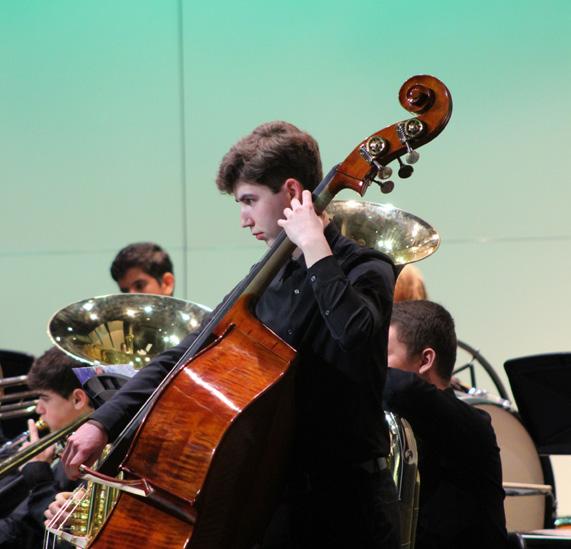

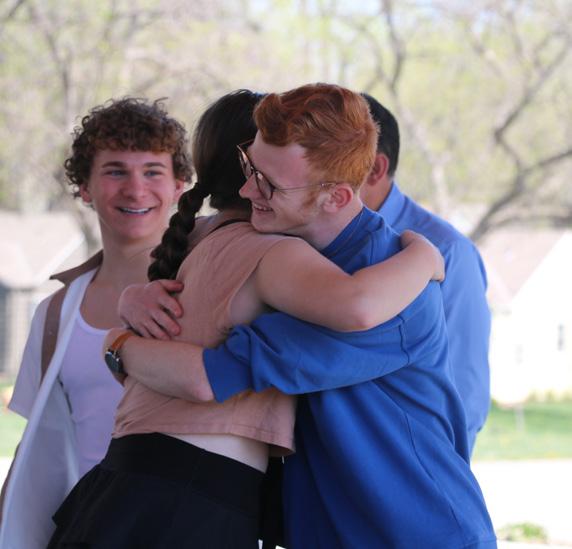
“The North Star” is the official high school news publication of Blue Valley North High School, an open forum distributed to all the students six times a year. This is the May issue of volume 37. This issue of “The North Star” is published digitally through ISSUU and in print by “Record News.” This is a student publication and may contain controversial matter. Blue Valley School District No. 229 and its board members, officers and employees disclaim any responsibility for the content of this student publication; it is not an expression of School District Policy. Students and editors are solely responsible for the content of this student publication.
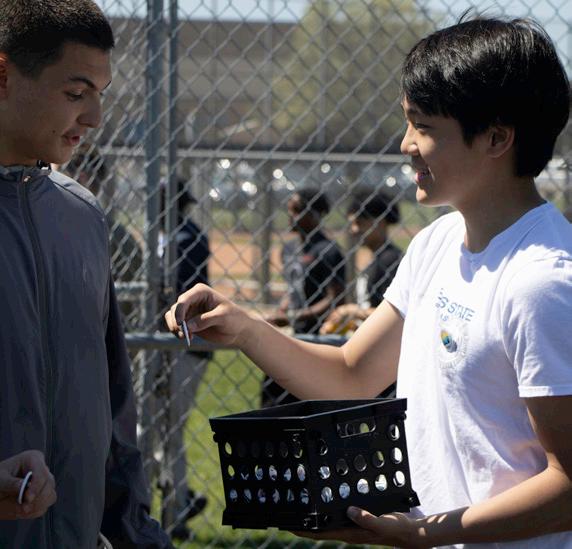

bvnnewspaper@gmail.com
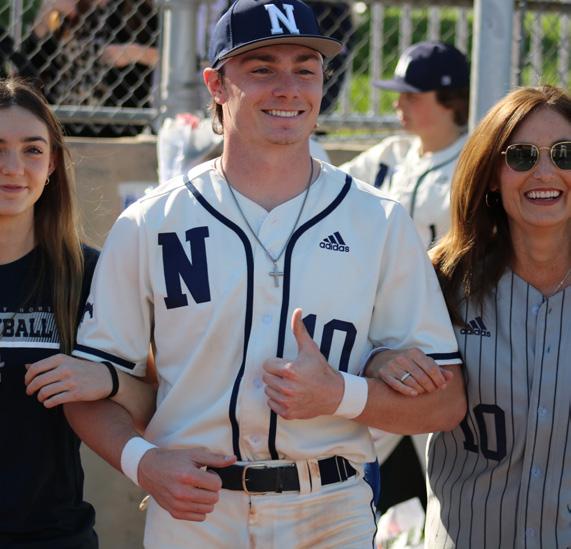
for letters to the editors, questions & guest writing opportunities
